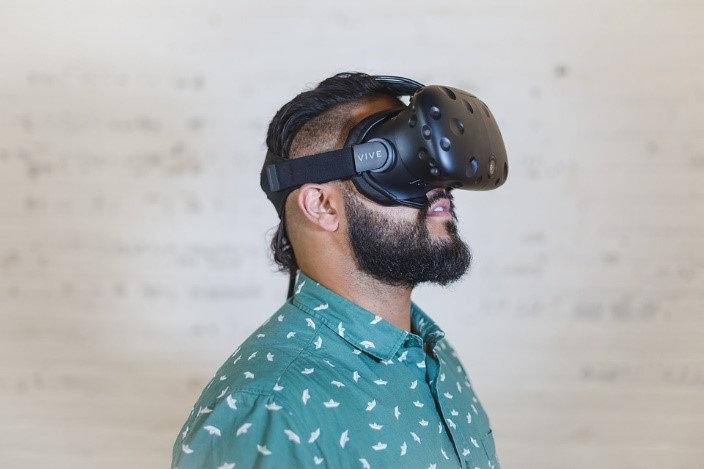Whether you prefer to spend the evening chilling with Netflix or playing a round of World of Warcraft, there’s no shortage of digital entertainment to keep you busy. The sheer variety of entertainment options we have is due to some major technological advances over the past few decades. Here’s a look at some of those technologies and how they work.
Virtual reality
We’re going to kick off the list with a technology that’s already making waves in the entertainment industry despite still being in its infancy. Virtual reality is promising to bring our full entertainment experience into a more exciting realm, from fully immersive gaming experiences to potential health and wellness applications. London’s already hosted our very first pop-up VR arcade, which was a raging success. Popular VR headsets like the Oculus Rift and HTC Vive are soon to be joined by the new Windows Mixed Reality, which offers movement tracking without extra sensors involved. Along with virtual reality, augmented reality is another technology changing the face of entertainment. If you’ve played Pokemon Go, you’ve already experienced an example of this trend which superimposes computer imagery into your field of vision.
Live streaming technology

Now that we have super-fast network speeds, it’s possible to enjoy live streaming for many different forms of digital entertainment. Whether it’s streaming a football match in the pub or playing a live multi-player game, you don’t have to wait to take part in real-time forms of entertainment. Collaborative games like Call of Duty and Rocket League allow you to share a live gaming experience with millions of other subscribers scattered around the world, for a lifelike experience. Live gaming apps like Real Racing or casino games can be played with the touch of a button from your phone.
The development of online slots

Gaming is a big part of digital entertainment today, including live poker and real-time sports betting. Slot machine technology has come a long way from the first mechanical machine, invented by Charles Fey in 1895. This original slot machine featured three spinning reels with spades, hearts, diamonds and a Liberty Bell. The prototype was an immediate success, and Fey couldn’t build slot machines fast enough to keep up with the demand. The first electronic machines didn’t turn up until the 1960s, built by Nevada Electronic to allow players to try their luck with roulette, poker, and horse racing. An electronic slot machine came soon behind in 1975, and the arrival of the internet led to many different types of slot games that you can now play from the comfort of your own home.
3D and beyond

The world of digital entertainment has grown in leaps and bounds from the first two-dimensional types of video or pixelated graphics. Realistic 3D entertainment is now ubiquitous, whether it’s seen in the 3D design of video games or the high definition of online film and television streaming. The next frontier in digital entertainment is taking the experience beyond the 3D realm into the fourth dimension. When you put on a 3D headset or glasses, you can feel like you’re able to touch characters or become a part of the world popping out of the screen in front of you. The fourth dimension takes this to the next level, engaging senses beyond just sight. For example a 4D cinema includes gusts of air, flashing lights and blasts of water to bring scenes to life. A new 4D aquarium is opening up in Missouri, giving visitors a fully immersive experience. As they walk through the Arctic area, the temperature drops and wind starts to blow, and the exhibition’s aromas are used to whisk you away to another place. It’s likely we’ll see these same concepts applied to digital entertainment in the future just as 3D technology has shaped it so far.
Mobile apps and touchscreens
We’re so used to having handheld entertainment devices in our pocket at all times that it’s hard to imagine life before the smartphone. As mobile networks have become faster and mobile devices smaller, it’s enabled the rise of entertainment and gaming apps that we now take for granted. The idea of a portable gaming device has been around for some time, including 90s bestsellers like the Nintendo Gameboy. The technology has grown since then to include a full bevy of downloadable mobile apps and streaming services – and London is a major centre for mobile game development, with over 500 games companies based here. The touchscreen itself is a big part of this as well. Imagine trying to play a game like Candy Crush or Angry Birds on a traditional QWERTY keyboard. Smooth, swipe-able touchscreens have vastly improved the user experience of digital entertainment.
From the development of mobile apps to virtual reality, these technologies have changed the face of digital entertainment. As new tech like augmented reality and 4D design grows, we’ll get to enjoy even more intriguing ways to plug in and pass the time.



